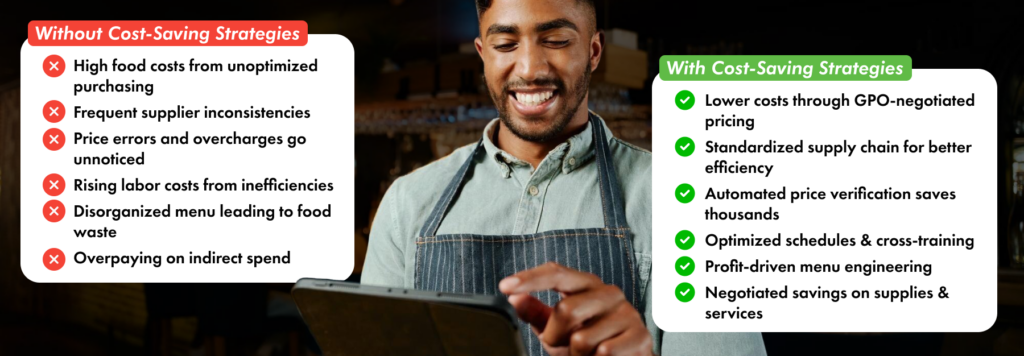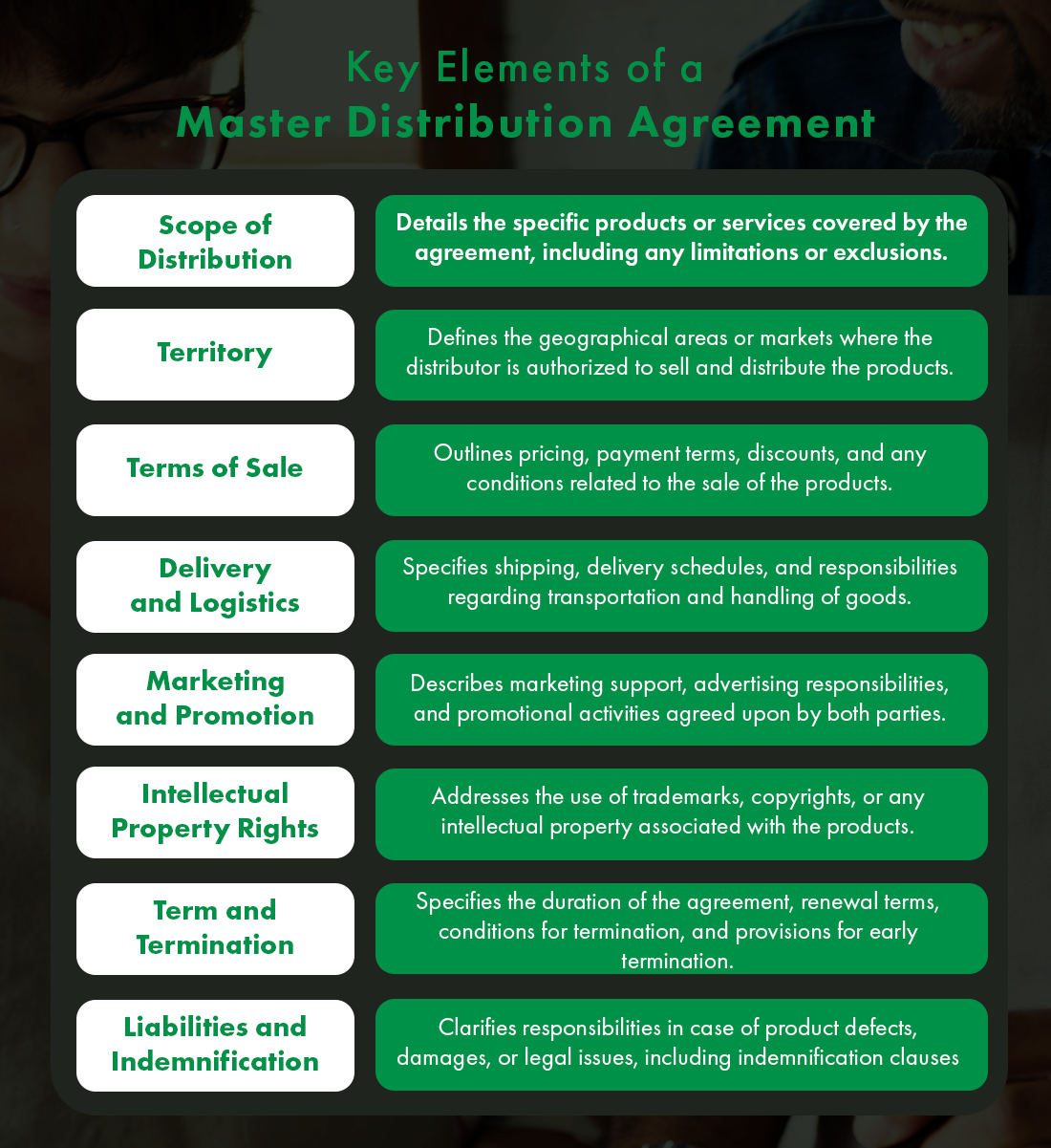How to Scale Your Restaurant Chain Without Wasting Money
Scaling a restaurant chain is an exciting opportunity—but without the right strategies, it can also lead to wasted money, inefficiencies, and unnecessary costs. Multi-unit restaurant operators must be strategic with purchasing, labor, and operations to maintain profitability while expanding.

The good news? With the right cost-saving strategies, you can grow your restaurant brand without letting expenses spiral out of control.
At Consolidated Concepts, we specialize in helping multi-unit operators optimize purchasing, supply chain management, and operational efficiency to reduce waste and increase profits. Here’s how you can scale your restaurant smartly while keeping costs in check.
1. Leverage Group Purchasing Power for Better Pricing
As you expand your restaurant chain, your purchasing power grows—but are you using it effectively? The more locations you operate, the greater your ability to negotiate better pricing. However, many restaurant operators leave money on the table by not leveraging their full purchasing volume.
Instead of sourcing independently, multi-unit operators should:
- Consolidate suppliers to secure volume-based discounts.
- Join a Group Purchasing Organization (GPO) like Consolidated Concepts for exclusive savings.
- Negotiate better vendor contracts based on chain-wide buying power.
Savings Impact: Multi-unit operators can reduce food and supply costs by 10%-35% by leveraging strategic purchasing programs.
2. Optimize Supply Chain Management to Cut Waste
A growing restaurant chain means more suppliers, more orders, and more opportunities for inefficiencies. Supply chain mismanagement—such as over-ordering, inconsistent inventory, or redundant suppliers—can quickly inflate costs.
To avoid waste and inefficiency, operators should:
- Standardize ingredient selection across all locations to avoid excess inventory.
- Use data-driven demand forecasting to ensure accurate ordering.
- Streamline vendor relationships to prevent duplication and inconsistencies.
By tightening supply chain processes, operators can reduce food waste, prevent stockouts, and save thousands annually.
3. Automate Price Auditing and Verification
Many multi-unit operators unknowingly overpay due to supplier pricing errors or invoice discrepancies. Without a system in place to verify pricing, you could be losing thousands of dollars per location.
Instead of manually checking invoices, operators can:
- Automate price verification tools to ensure contracted pricing is honored.
- Monitor supplier compliance to catch overcharges and billing mistakes.
- Prevent margin erosion by tracking cost fluctuations in real-time.
With automated price verification, restaurant chains can protect profits and prevent unnecessary overcharges.
4. Control Labor Costs Without Sacrificing Service
Labor is one of the largest expenses in the restaurant industry, and as you expand, labor costs can skyrocket. However, reducing labor costs doesn’t have to mean cutting staff—it’s about working smarter, not harder.
Multi-unit operators can save on labor by:
- Cross-training employees so staff can cover multiple roles, reducing the need for excess hires.
- Using technology to streamline scheduling and eliminate overtime costs.
- Investing in automation for time-consuming tasks like ordering, reporting, and invoicing.
The key is balancing labor efficiency with customer experience—ensuring each location runs smoothly without excess labor costs.
5. Engineer Your Menu for Profitability
Expanding your restaurant means more locations, more menus, and more opportunities for waste. Without proper menu engineering, operators risk higher food costs and lower margins.
To optimize menu profitability, multi-unit operators should:
- Standardize recipes to keep ingredient costs consistent
- Promote high-margin items with strategic menu placement
- Minimize perishable inventory by incorporating shelf-stable and frozen options
A well-engineered menu maximizes revenue per guest and prevents costly food waste.
6. Reduce Indirect Spend on Non-Food Expenses
Beyond food and labor, indirect spend—such as cleaning supplies, linens, uniforms, and packaging—can quietly drain profits if left unmanaged.
Multi-unit operators can slash indirect costs by:
- Negotiating better contracts on essential supplies.
- Consolidating vendors to eliminate redundant spending.
- Switching to energy-efficient equipment to lower long-term operational expenses.
Many operators overlook indirect spend, but small savings across multiple locations add up to major cost reductions.
7. Standardize Operations to Increase Efficiency
Scaling successfully requires operational consistency across locations. Inconsistent procedures lead to waste, inefficiencies, and unnecessary costs.
To create operational efficiency, multi-unit operators should:
- Develop clear Standard Operating Procedures (SOPs) to streamline processes.
- Train managers to implement cost-control strategies across all locations.
- Use centralized reporting tools to monitor expenses and identify cost-saving opportunities.
By standardizing best practices, restaurant chains can scale with efficiency—without financial waste.
8. Invest in Technology to Scale Smarter
Restaurant technology is no longer optional—it’s a necessity for cost control and scalability. Multi-unit operators can save money and improve efficiency by investing in:
- Procurement software for supplier management and cost tracking
- Back-office integrations for real-time sales and inventory data
- AI-powered demand forecasting to optimize ordering and labor
By embracing tech-driven solutions, operators can scale without unnecessary overhead costs.
Scale Your Restaurant Smart with Consolidated Concepts
Growth doesn’t have to come with wasted money. By implementing smarter purchasing strategies, optimizing labor, reducing waste, and leveraging technology, multi-unit restaurant operators can scale profitably.
At Consolidated Concepts, we help multi-unit operators reduce costs, negotiate better pricing, and optimize operations. Whether you need group purchasing power, supply chain solutions, or cost-saving strategies, we’ve got you covered.



